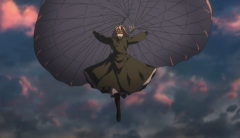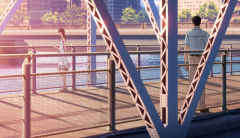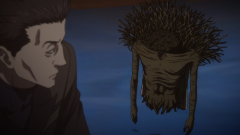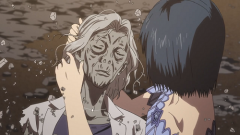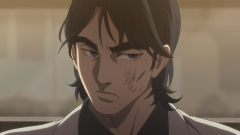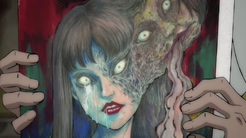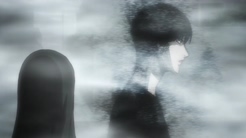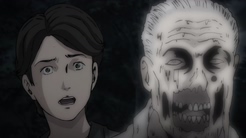We have seen an influx of Fate adaptations over the last year and sadly each has proven to be disappointing except for a cooking slice of life short series which is weirdly better than it has any right to be. This movie was the last of the Fate adaptations that I needed to see but sadly remained out of my reach due to screenings being nowhere near where I live. So I waited and now with the Blu-ray release I can finally experience it and by god it’s perfect. This is only the first of three movies covering the Heaven’s Feel route of the original visual novel. As for what that means to the uninformed, the original first visual novel of Fate/Stay night was a choose your own adventure style game where the story could turn out one of three completely different ways. The first path where Saber is the main heroine is called Fate, was adapted by Studio Deen in 2006 but while the only adaption of this route it is considered lackluster. The second route is called Unlimited Bladeworks where Rin is the main heroine and has been adapted by Deen into a movie and again by Ufotable into a TV series. This movie is the very first adaption of the previously unadapted third route called Heaven’s Feel where Sakura is the main heroine and more or less is the grand finale of the original game. When compared to the other two routes Heaven’s Feel is generally considered darker in tone and quite a few consider it the closest thing to a true sequel to Fate/Zero. Take that statement with a grain of salt however as it certainly isn’t intended to be a sequel but rather a conclusion to the original game. As a long time fan of the series I was curious as to how Ufotable would handle the adaptation and if this first movie is an example of what the full trilogy will be I would consider it a prefect adaption. Not only did this first movie cover the important points of the beginning of the route but actually improved the pacing and story with extra scenes.
In the visual novel it was briefly mentioned how Sakura started to come to Shirou’s house to help out but Ufotable actually shows it right from the start which I feel was a great introduction for her. The expanded action scenes and original scenes of things that happened outside of Shirou’s perspective really added much needed context to the story while giving justice to characters whom in the visual novel were sent off less ceremoniously. If there is a character that truly benefited from the animated adaptation it’s most definitely true Assassin. It’s nice to see a master who uses an Assassin class servant as they were intended to be used and despite being an antagonist you could always see how under powered he was when compared the powerhouses that are other servants. The animation really shows Assassins fighting style of avoiding direct confrontation and relying on traps and tricks to catch servants off guard. Even Shinji was given more context which made him more understandable though obviously still not likeable. The small nods to Fate/Zero help continuity better than the original story did as of course Zero was originally made after it. Animation of course was fantastic as this is indeed Ufotable with a movie budget and clearly no expenses were spared in making this thing as gorgeous as humanly possible. The fight scenes are absolute works of art and exhilarating to behold. Soundtrack was also quite excellent and despite my misgivings with Yuki Kajura I found this soundtrack quite effective and only remembered it was Yuki’s work when the choir jumped in at the opening credits. Through admittedly I wasn’t quite paying attention to the soundtrack but that in itself is a sign of grown from Kajura as her soundtracks had a tendency of stealing attention away from a scene whereas here the soundtrack worked more in tandem with the visuals.
Out of the original three routes, Heaven’s Feel is considered the darkest story and for good reason. As dark as Fate/Zero? Not certain if it’s that level but we are dealing with some pretty heavy stuff here. For one it’s clear that this version of the Holy Grail war has far more collateral damage than any other. It was said in the background that accidents where happening and people were dying in the background of other series but here it’s gotten to the level of being a massive concern. The people of Fuyuki know that something is going on and more and more incidents are happening. Shirou’s friends are no exception to this as even they are victims of the war. On top of which we got this mysterious creature floating around draining people into comas and the movie certainly shows how eerie this thing is as well as how dangerous. With Sakura being the main heroine as well we glimpse the abuse she has to endure at her home. This is a pretty heavy story for both the servants and the masters with bleak prospects to come.
The movie of course isn’t without flaw. It assumes you have at least seen the Unlimited Bladeworks adaptation and makes no effort to ease in newcomers as it quickly montages things previously covered. Small references to Fate/Zero have been added by Ufotable too so some knowledge of that can help. Despite efforts to improve the pacing of the story there are points of this movie which feel rather slow and rely on it’s atmosphere and soundtrack to carry it. The CGI while well done can be distractingly noticeable at times such as the scene between Lancer and Assassin on the truck. I would even go so far to say that maybe Ufotable over polished it. Also indeed this is a film for Fate fans so those who couldn’t get invested in previous iterations most likely won’t find anything here to change their mind. Naturally as well this film is only one third of a story so it doesn’t end conclusively and only is one part of a story. But for a Fate fan such as myself I loved it and thought it was the best it could ever be. If the other two movies are as good as this we could very well see the Fate anime to call Fate/Zero’s undisputed position of best Fate Adaption into question.











